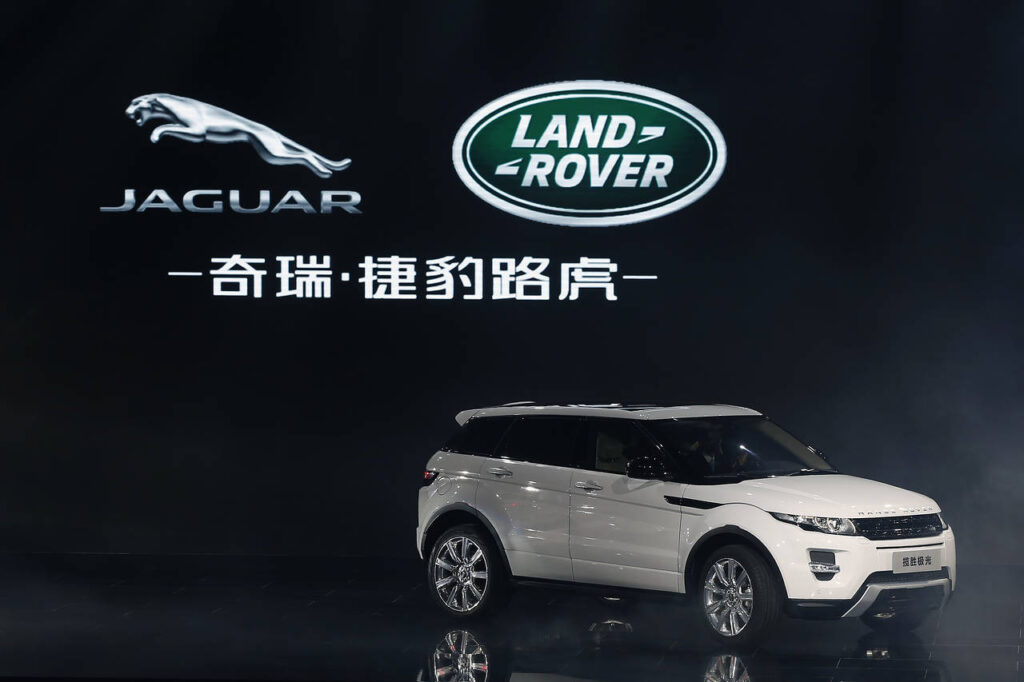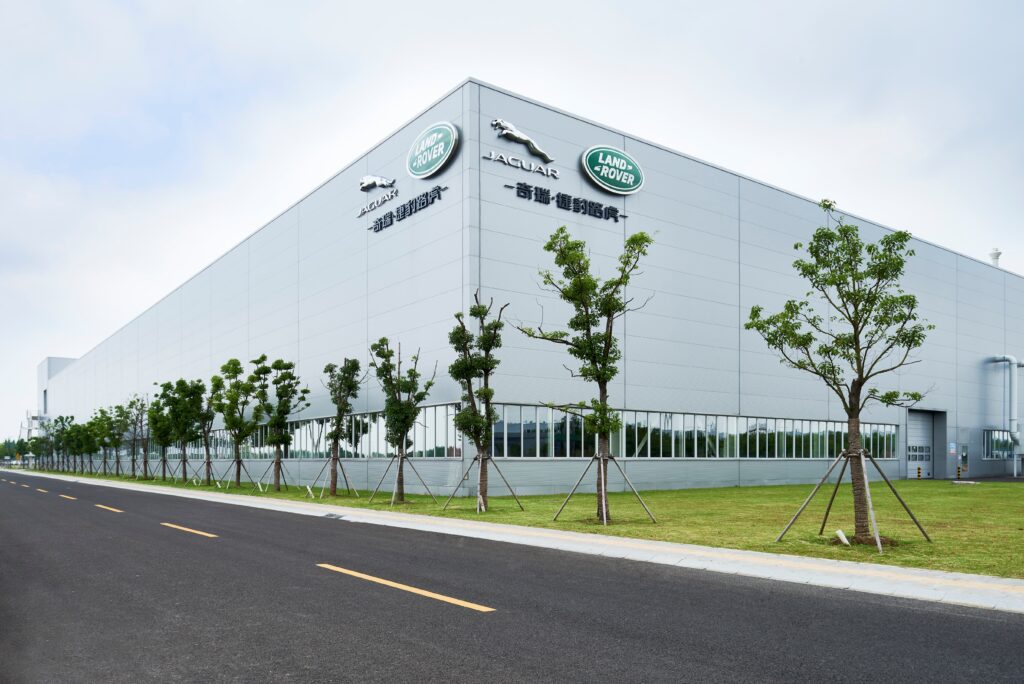Jaguar Land Rover (JLR), a renowned premium car brand in the United Kingdom, is recognised globally. JLR still identifies itself as British even though it is owned by Tata Motors. Out of many countries, China has been recognised as one of JLR’s primary markets. To ensure JLR’s remain strong in the country, several strategic plans have been implemented. In this segment, we will discuss some of the strategies that JLR employed in China and the reasons why the company also trades internationally.
What is JLR’s strategy?

Jaguar Land Rover, a brand known for its performance and luxury, faced a tough challenge in one of the biggest world automotive markets—China. With tough competition and changing consumer preferences, doing this business was not easy. However, instead of going back or using traditional methods, Jaguar Land Rover came up with innovative strategies that not only helped them survive but also succeed in this dynamic environment. From setting up local production initiatives to focusing on electric cars. This approach is a masterstroke for foreign companies looking to make their mark in China. Let’s look into the clever tactics employed by JLR’s Strategy to overcome its challenges and achieve success on China
Strategy 1: Manufacturing JLR Cars in China
- Reason: Because of the high taxes charged on imports, vehicles from JLR are extremely expensive within China. These costs were extremely unfavourable. The cost of purchasing JLR vehicles in China is almost double, which makes business very difficult to do. The company decided to improve the situation by building a manufacturing factory locally.
- Action: In 2012, JLR made a deal with one of the most recognised automobile companies in China, Chery Automobile, to build a £1 billion manufacturing plant in China. This deal enabled the brand to locally manufacture cars, which would lower costs and taxes on imports.
- Benefit: JLR was able to produce vehicles that better matched the tastes of Chinese consumers. They can make them more affordable because of the lowered tariff cost. This allowed JLR to maintain competitiveness in the growing luxury vehicle market in China.
Strategy 2: Establishing Good Working Relations with Local Partners
- Why: China has a very specific approach towards business and has specific domestic needs and preferences. A thorough knowledge of the market, such as having a well-established network, is very important for success.
- Action: In 2010, JLR created a National Sales Company (NSC) to oversee the development of its dealer network in China. The collaboration with Chery enabled JLR to take advantage of Chery’s dealership network throughout China.
- Benefit: This partnership with Chery helped the JLR brand sell their locally produced vehicles at cheaper prices. Also, they take advantage of Chery’s already established dealer network, which increases brand presence and market share in a competitive environment.
Strategy 3: Concentration on Luxury and Modernization
- Why: The market for cars for the rich in China is one of the fastest growing in the world. In order to keep up with that growth, Jaguar Land Rover maintained their brand as high-end by concentrating on luxury design and technology.
- Action: JLR launched new car models with modern technology design and aesthetics that showcased British luxury and craftsmanship, which appealed to Chinese consumers. They also entered into the EV market with the luxurious Jaguar I-PACE SUV, which is a fully electric vehicle. In response, it increases the population of customers who want eco-friendly vehicles.
- Benefit: By focusing on quality, innovation, and sustainable practices, JLR was able to win over China. Furthermore, JLR’s gaining attention from consumers who love the environment was boosted by the adoption of electric vehicles.
Strategy 4: Using Local Knowledge and Consumer Preferences
- Why: It is important to note that having knowledge and understanding of the local population’s preferences and tastes plays an important role when you want to do business in a foreign market. Car buyers in China have their own set of specific needs regarding a car’s body and features.
- Action: Jaguar Land Rover studied their Chinese customer preferences in detail. JLR focuses on the need for large cars with superior technology, luxury, and modern styling. It changed some models to match the features of China’s market.
- Benefit: JLR’s ability to provide what Chinese people wanted, for example, sleeker cars and spacious interiors, allowed it to win more Chinese customers and bolster its stake in one of the most competitive markets.
Strategy 5: Eco-Friendly Strategies and Social Responsibility

- Why: A growing number of Chinese customers, especially younger ones, prefer companies that engage in eco-friendly branding and social responsibility.
- Action: Jaguar Land Rover showcased its green mobility efforts by participating in the China International Import Expo (CIIE) and emphasising its sustainability commitments with electric vehicles like the Jaguar I-Pace. Furthermore, JLR’s Dream Fund, together with the other funds, also provided support for education and social welfare projects in China.
- Benefit: In addition to improving JLR’s brand image, the company’s focus on sustainability connected it with the expanding eco-friendly demographic in China. Moreover, the company’s CSR initiatives generated goodwill, enhancing its position in the market.
Reasons for JLR’s International Trading

Jaguar Land Rover engages in international trade for the following reasons:
Greater Market Size Is Advantageous
JLR’s high-end vehicles, including its electrified models, are much praised. With its international rebranding, Jaguar Land Rover is able to reach more customers, particularly in emerging areas like China and India as well as developed ones like the US and Europe.
Decrease in Dependency on a Single Market
Because of its global reach, Jaguar Land Rover is less reliant on any one area in this regard. Strong sales in other locations might offset economic, regulatory, or other challenges in one market. China dampened, for example, but JLR had the US and UK as backups.
Taking Advantage of Competitive Benefits
- The markets in China, India, and other parts of Asia offer the most potential for growth for JLR. With rising incomes, more consumers in these areas are likely to desire luxury cars. JLR can cater to that demand with region-specific products like its electric vehicles without losing its brand identity.
Economies of Scale and Production Cost Management
- JLR’s electric vehicles, along with other products, can be manufactured more affordably because the company can produce in China, and China is a major consumer market. It also allows JLR to shift its production to the different regions. So the customers use the company’s products, thus increasing the popularity.
Conclusion
JLR’s strategy of international trade, particularly with China, has helped the company achieve success globally. The company has targeted local markets with strategies such as local production and strong relations with other firms. By focusing on sustainability and innovation to JLR’s advantage in one of the most competitive markets. Furthermore, it enables the company to ease risks while venturing into emerging markets worldwide, thereby assuring JLR’s growth and strength in the automotive industry.


